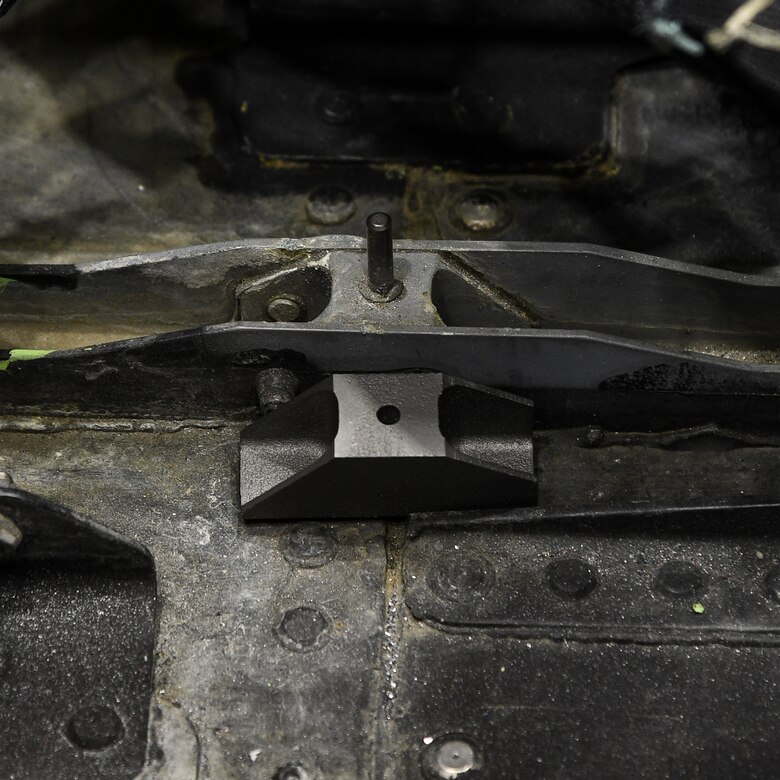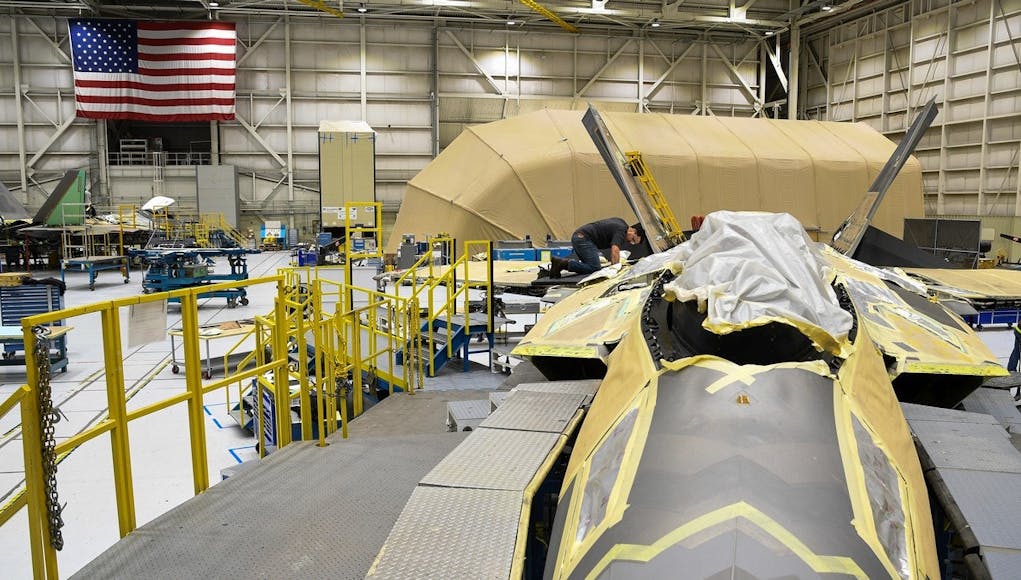The US Air Force 574th Aircraft Maintenance Squadron maintainers have installed a metallic 3D printed part on an operational F-22 Raptor, marking a first for the aircraft as 3D printing is increasingly used to create spare parts for land, air and naval assets.
“One of the most difficult things to overcome in the F-22 community, because of the small fleet size, is the availability of additional parts to support the aircraft,” said Robert Lewin, 574th AMXS director in a press release received by the UK Defence Journal last week.

The use of 3D printing gives air forces the ability to acquire replacement parts on short notice without minimum order quantities. This not only saves taxpayer money, but reduces the time the aircraft is in maintenance.
Last year, we reported that US Marines with Combat Logistic Battalion 31, 31st Marine Expeditionary Unit, are now capable of ‘additive manufacturing’ F-35B parts, also known as 3-D printing.
According to a statement on the part being created for the F-22:
“The printed bracket will not corrode and is made using a powder bed fusion process that utilizes a laser to build the part layer by layer from a titanium powder. A new bracket can be ordered and delivered to the depot for installation as quickly as three days. The printed part replaces a corrosion-prone aluminum component in the kick panel assembly of the cockpit that is replaced 80 percent of the time during maintenance.”
The part will be monitored while in service and inspected when the aircraft returns to Hill AFB for maintenance. If validated, the part will be installed on all F-22 aircraft during maintenance.
“We had to go to engineering, get the prints modified, we had to go through stress testing to make sure the part could withstand the loads it would be experiencing – which isn’t that much, that is why we chose a secondary part,” said Robert Blind, Lockheed Martin modifications manager.
The part will be monitored while in service and inspected when the aircraft returns to Hill AFB for maintenance. If validated, the part will be installed on all F-22 aircraft during maintenance.














It’s a different shape and a couple of holes are missing but apart from that, It looks spot on.
Look again, it is the same shape just rotated 180 degrees.
Ok, It’s the wrong hand and no holes then !!!
Aren’t the RAF already coming this with Tornado GR4?
Should be more widely implemented among our forces really; imagine if every maintenance unit could 3D print parts like that without having to pay exorbitant prices and/or wait weeks for it?
First up have limited working experience with 3D printing, and there seem to be limited cost comparison papers.
I suspect for the near future best use of 3D printing would be for replacement parts at short notice on deployment where supply chain is potentially long and quick turn around required. But suspect that for spares/predicted maintenance cast parts will for now while having longer leadtimes be more economical to produce.
Would be great to read some articles/papers with more detail but for now would suspect focus of 3D printing for military is for deployment use as opposed to replacing traditionally sourced parts completely.
As far as I know Airbus are already producing parts for final assembly with 3D printing. F1 Teams are also using it quite a lot now. My understanding is that it produces very strong structural material while reducing the cost compared to milling large metal blocks.
This is the future guys. When this works fully through the system it will transform all our militaries in both war and peace. Imagine unmanned ships, aircraft and vehicles with an inbuilt 3D printer for repairs both routine and battle, ammo and the whole shebang.
Are you kidding me? – I could make that in my shed in about half an hour with a hacksaw, drill, file and a bit of aluminium square section.
No you couldnt, unless you are part of the “Yeah, thats good enough” brigade that bodged British manufacturing into destruction.
PS: I suspect it is titanium for a reason.
Hi Steven, I was just referring to the comment in the article ”The printed part replaces a corrosion-prone aluminum component in the kick panel assembly of the cockpit that is replaced 80 percent of the time during maintenance”
Best regards,
Billy.
Even in aluminium you would be hard pressed to make it in 30 mins to the required standards…
What a blind duck egg you are!
Titanium was used for the bracket for the simple reason that it requires less processing after it has been 3D printed. (tougher than Ally, but can be more brittle) The laser does fuse the titanium together, but it is not a fully amorphous structure and will have a number of inclusions. After it has been printed it needs to be put in an oven for a couple of hours for annealing, this softens (less brittle) the structure and tries to remove the inclusions.
Southampton University have a metal 3D printer used by the engineering students. It has been used by Formula 1 teams (didn’t say who though!!) and the material after printing and treating needs very little finishing. The examples they showed was a compressor, shaft and turbo for a turbo charger and a very intricate exhaust manifold.
The only problem with metal printing is the time it takes, the exhaust manifold took 16 hours to print and another 8 hours curing time. If they can speed up the process, then yes I think this will become more useful compared to the usual removal material processes. The ideal place for this type of printer would be aboard a carrier or ship.
Also the 3D metal object does not have a defined grain direction, which can be important for load bearing etc. The RAF are currently using 3D printed pieces on Typhoon, these are small brackets and a fairing I believe.
Thank you DaveyB That was very Informative and one of the best replies I’ve read here for Yonks.
Metallurgy is one of my specialties.
3D as its issues – it could be a holy grail, it could be a dead end. time will tell.
The rush to it may lose the basic knowledge though.
Few can remember how to cold stitch or weld cast iron _ I can, but I’m old.
Cold Stitch and Cast Iron welding?
In the US it is still taught in Ag at every small and mid-size town High School. Always a nice class to substitute for.
Ghost Busters ????
In the NEast of England there are quite a few rapid prototyping /small batch exotic material component manufacturers which would do you half a dozen off in a day or so and despatched for a good price. Thing is what about the black budget which would charge a few $millions.
If the original aluminium component is corroding that easily maybe it was designed to (sacrificial component). Hope changing it to titanium doesn’t cause what it’s mounted to to corrode instead.